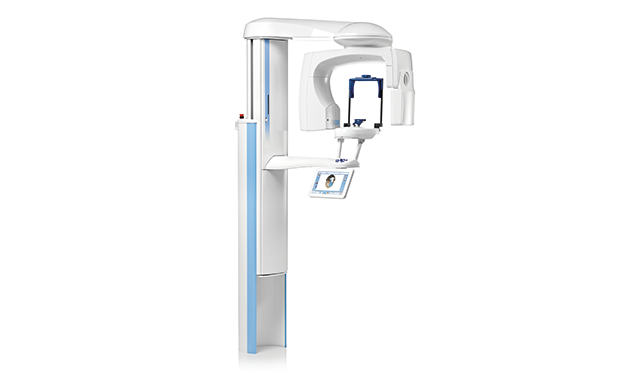Practice better dentistry with 3D imaging
How the Planmeca ProMax 3D Classic system helps one clinician to better plan procedures.

If you aren’t utilizing in-house 3D radiography in your dental practice, you’re missing out. Where traditional 2D X-rays are found to be lacking, dental cone beam computed tomography (CBCT) excels.
It’s widely accepted that with CBCT imaging, clinicians have access to greater detail and more information. Historically, this had come at a price. 3D images required higher doses of radiation than their 2D counterparts. However, Planmeca customers using Planmeca Ultra Low Dose™ technology can get this information at doses equivalent, or even less in some instances, than 2D radiography.
Dr. Victor Rodriguez, who practices in Doral, Fla., recently upgraded to the Planmeca ProMax® 3D Classic system and indicates the results have been excellent. The system produces high-quality 3D images of the mandible and maxilla for about the equivalent dose of a single intraoral periapical image using Planmeca Ultra Low Dose.1 Dr. Rodriguez describes it as a “panoramic technology, but in 3D,” and he says the CBCT images help him to create the right treatment plans with better patient outcomes.
“More information is always better,” Dr. Rodriguez says. “I don’t like surprises. I want to be able to plan everything before I even begin the procedure. Previously, you might not know exactly what you’re going to find when you begin working. Now, I know what to expect. It’s a finer image, and it can find defects more effectively.”
Read more: How to use a 3D digital workflow for ortho treatment
Dr. Rodriguez uses the Planmeca ProMax 3D Classic system throughout his general dentistry practice in everything from root canals to periodontal surgery to wisdom teeth extractions. In addition to utilizing Planmeca Ultra Low Dose technology, Dr. Rodriguez has access to Planmeca CALM™, an exclusive feature that corrects for patient movement during imaging. Planmeca also offers options such as cephalometric imaging for orthodontics and other advanced modalities that are only available with its equipment.
“I know exactly how many canals and the exact length of each of them when I’m performing a root canal” Dr. Rodriguez says. “That’s particularly helpful to reduce costs and chair time.”

For dental implants, a clinician might opt to choose one of four resolution settings to capture the detail required to perform minimally invasive surgeries and have ideal patient outcomes. Again, with Planmeca systems, the low dose technology can be used on any resolution setting producing and image with no statistical reduction in image quality.2
Some dental professionals refer patients to specialists or imaging centers for 3D imaging, but this can be problematic. Patients have to find time to go to a separate location, prolonging the time until they receive treatment and causing additional inconvenience. Some patients will simply skip this step and go elsewhere. With the ProMax 3D Classic system in-house, you can get the images right away and relay the information to the patient immediately, which increases case acceptance and conversion rates.
“It’s very simple to use, particularly the Planmeca Romexis software,” Dr. Rodriguez says. He went on to praise Planmeca’s customer service. “Their team easily walked me through the new equipment when I upgraded to the 3D system. Part of why I selected a Planmeca ProMax when I started my practice is the ease of upgrading the equipment. It allowed me to grow when I was ready and it protected my initial investment.”
References
1. Data on file.
2. “Dosimetry of Orthodontic Diagnostic FOVs Using Low Dose CBCT Protocol” by JB Ludlow and J Koivisto.
